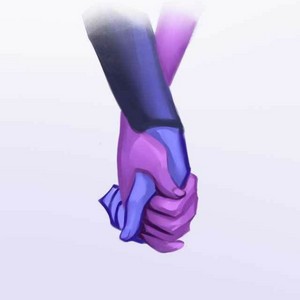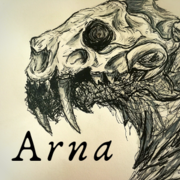I was already pretty familiar with the basics of computers since I worked at the library since I was ten years old, but working at the blood lab was an entirely new game.
In the library, the computers were set up so we could print new books in the publishing machine there. You had a computer that accessed the library network, and from there you could download any book or magazine you wanted to print at the library.
Printing was ultimately at the discretion of the head librarian, but normally we’d print anything that someone requested, with requests usually costing two silver pieces, and then the book would be property of the library. If the local wanted to take what we printed home to keep, then that was ten silver base. If it was a huge print job, than that was usually another ten silver.
The print machines were in a different room and connected to the library computers through a single wire that went into the wall, and there was a whole art to printing them. There was a program you ran for the book cover (which was usually a type of soft material made from wood dust and paper waste that was pressed together), and then you had to format the pages to fit the cover size.
And then there was a long wait while it printed. You had to watch the first ten pages, called ‘the leading pages’, and if those came out good and fit in the cover, then the rest would be fine. If they came out the wrong size, then you had to print another cover until you got one that fit, with the old cover being heated and smoothed in a different recycling machine to be used again. Usually you did standard size, but occasionally someone for one of the other sizes (pocket, purse, extra large) and then it’d be a bit trickier.
But even that was easy in comparison to these computers.
On my first day, I sat in the office of the manager of the office – Marybeth Redwheel, who was the only daughter of our town’s mayor. I don’t think Big Blue would have allowed me to come to Riverside to train if not for the fact that I was training under Marybeth, who I think at one point was supposed to marry my Uncle, given the fact that whenever Dad got drunk, he was always crying about why she couldn’t have married Uncle Laurie and how perfect they would have been together.
But I mean, Marybeth was married to a traveling merchant and lived with her sister in law and their kids- Marybeth’s kids with her husband and her sister in law’s kids with her husband...who I think was a traveling merchant as well.
In fact, I think he traveled with Marybeth’s husband?
I wasn’t sure, but I knew that Marybeth’s sister-in-law worked for the Mayor ever since she moved to town, and whenever I was in trouble and had to go see him, she was the one that brought me to wherever he was in town.
Everyone liked Marybeth, though. She was one of few in our town that had ever gone to The City, having gone to the university there to become a special kind of doctor.
If you wanted to be a doctor, normally you just went and studied under another doctor for a number of years, but when you went to The City, you were trained to be a special sort of doctor that involved learning about genetics and medications and whatever.
Everyone was very proud of Marybeth, always saying how smart she was, which is why she was invited to go to the university. There was a lot of talk about her daughter going there as well, and I’d believe it. Gina, named for Marybeth’s sister in law (Regina), was a freaky mathematician and went to a special school in Orange Hills to study under another mathematician every summer. There was even talks about her going to The City the same time I did so she would know someone there when she was at school, but I had a bet with my Dad that she wouldn’t go.
Gina was such a Mama’s girl, she’d never want to leave our home town.
But not me.
I was going to go to the city, and I’d be there for years, hopefully, and once I was ready to settle down I’d come home, but I wanted to stretch my wings a bit and really enjoy life outside of my little humble bubble.
And that meant I couldn’t fuck this up.
So I listened and focused very intently on what Marybeth was showing me when she walked me out of her office and sat me down in a cubicle down the hall.
Firstly you got a closed white box that had a heavy duty envelope attached to it in the little pocket on top of the box.
You’d take the envelope and open it, taking out the thick folder inside and put it on the table.
Inside the folder were papers with the details of each patients whose blood samples were in the white box. Sometimes a patient would have just two pages, other times they could have as much as twenty pages.
At the desk in the cubicle was a computer that ran just one program, which was the one I would be using and Marybeth sat with me for over a week to learn how to use.
I would open a new project on the special program for the lab, one that was a more detailed spreadsheet than the simple ones we used in the library.
Everything on the patient’s pages had to go into their own project, and it what was really important to make sure to note what patient was going into what slot so when the blood was testing, it would match the right patient.
There was a little box at the top of the project where I had to put in the number that corresponded with the slot number in the blood machine I was putting that patient’s blood sample in.
So if Adam Red was the first patient’s file I had, I would number him ‘one’ on his project and then I would open the box that came with the files, take out the blood sample with his name, birthday, clan and individual colony number on it, and then open the door of the tall machine next to my desk and put the sample into the number one slot.
There were twenty slots in the machine, and each box was capable of carrying ten, but sometimes they could just have one blood sample, which was usually a rush order for a specific test.
Once I put in the patient’s data in the project and put their sample in the machine, I would close the machine door, open a new project, and put in the data for the next patient.
But that wasn’t it.
THEN, one the box was empty of blood samples, I would write down their names, birthdays and colony number on a special note sheet that came with each box. Marybeth called this the ‘off the record’ notes for doctor’s to see in case there was anything that came up.
The empty box was kept on my desk, and then I would then do a second box and put that in the same machine as the first, going through the same steps, and once I had their information on the second note sheet, I would finally start the machine.
I was told that as long as the boxes were the same color, I could put them into the same machine.
White boxes were testing the blood of patients, mostly pregnant women.
Red boxes were testing the blood for compatibility.
Yellow boxes were much smaller and tested for specific illnesses, but Marybeth said I would likely only ever have to deal with white boxes and red boxes.
There was also a silver box, which was the same size of a small yellow box, but...Maybeth said if I ever saw one of those, to bring it straight to her office, since those were the most difficult tests of all and had to do with a specific genetic test – she assured me though that it was highly unlikely I would ever see one in our building.
On the blood testing machine, there was an indicator light that would change from green, meaning it was ready to open, to yellow, meaning it was processing the samples and the door was locked.
The machine would test the samples, and once it was done, the individual projects would automatically input the data into the sheet I had open on the computer.
And all of that was the easy part.
I would then have to go down each of the patient’s results and write down any alerts or error messages. Like if a sample had an alert for a hormone that indicated a failing liver or heart, that would get written down on my special sheet.
As I would be dealing almost exclusively with the blood of pregnant women, I was unlikely to get that particular code since whom in childbearing years weren’t allowed to drink alcohol and had their hearts regularly monitored to make sure they were healthy enough to have a bunch of kids, but still I had to write down any error code that popped up.
Marybeth said that local doctors could easily test for abnormal liver numbers and nutrient deficiency with the dab tests – which just involved someone getting a prick in their arm, but what we did was much more delicate and looked for much more serious threats that involved a lot more intensive care.
So I was unlikely to get many error codes at all.
I was told I might get one error code once every one hundred patients, but I was then told about the time there was a bacteria outbreak that caused a lot of pregnant women to have livers in distress, and since then it was policy to always write down every error code so they could try and hit any community issue before it resulted in the loss of mother, baby or both. In theory, I wouldn’t be writing down much of anything.
Once I looked through all of the information – and there was about twelve pages full of information for each patient - I would then individually press the submit button at the bottom of the patient project and put the note sheets into the ‘completed’ metal box on the edge of my desk so Marybeth could look over any error codes I got.
When the machine light turned green again, I would open the door to the machine, take the samples out, and dump them into the special trash container on the wall of my cubicle opposite my desk. If I needed to run the same tests again, I could do so by pressing a special button on the machine, but was told to get Marybeth’s approval and advice first.
The empty box the samples came in would be put on a shelf by the machine and I would go and get another pair of boxes from the loading room – which was kept cold - and start the process all over again.
“If this light is ever red on the machine, you immediately stop all testing and call me -” She pointed to the paper taped to the wall by my monitor that had a bunch of numbers listed on it, including Marybeth’s, next to her name and flower stickers. “Just pick up the comm here on the desk and put those three numbers in, tell me that the light is red.”
“What does red mean?” I asked as I picked up the comm receiver, looking to the large numbers on the receiver before I set it back down.
“It means the machine is having an error - the blood has to be kept at a certain temperature or else we can get incorrect readings.” She said with a little smile. “The machines do almost all the work with the blood – your job is to input the results into the spread sheets that go into the patient’s files. You need to check and double check, because these results are going to tell the matriarchs all bunch of things – mainly, who is compatible for marriage if the box is red, and if the box is white, who is pregnant, if the pregnancy is going to be a little boy or girl, if that baby is likely to have bad eyesight or any genetic issues like particularly bad night blindness. Things that will help better prepare the parents and clan for the new arrival so they can provide what they need for them.”
She pointed to the top of the screen to where there was ‘untitled new file’ written on the bar there.
“You always save the file with the patient’s house name – or clan name – the family name, first name, and then the date the blood was taken.”
I nodded, writing that down in the notebook my Mom had given me before my Dad took me to Riverside in the family carriage.
Marybeth leaned against the wall and watched as I typed in the details to the sample patient, checking the ‘slot 1’ box before I carefully put the vial into the first slot, saving before I pushed the slot closed, pulling it open to see the vial was gone and the slot was replaced with the second one. I repeated the process again and again until all sixteen from the two white boxes were in the machine.
I paused, looking at the controls before I pressed the ‘start button’. The machine light going green, humming before it turned yellow.
“And that’s it, kiddo!” She said brightly, patting my arm. “If you have any problems, don’t be afraid of coming down and asking me, okay?”
I nodded and thanked her before I returned to my work.
Overall, it wasn’t to bad, but I had to stay focused, which I was more than capable of doing.
It was also pretty interesting – I even recognized some of the names, which was fun.
And I was never bored, either.












Comments (1)
See all